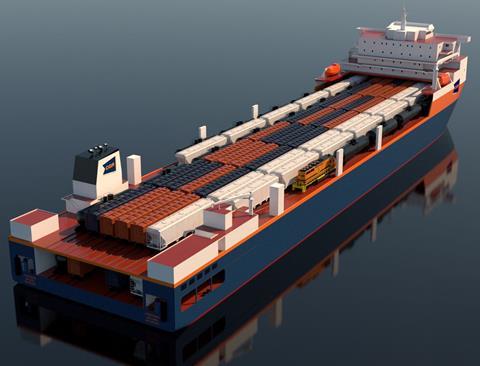
NORTH AMERICA: The first of two train ferries ordered for CG Railway’s route across the Gulf of Mexico has been launched by CSSC Huangpu Wenchong Shipbuilding Co in China.
The CGR joint venture of Genesee & Wyoming and SEACOR Holdings transports 10 000 wagons/year between Mobile in Alabama in the USA and Coatzacoalcos in Mexico.
The new ships are expected to enter service in Q2 and Q3 2021, replacing two vessels which have transported more than 200 000 wagons on over 1 400 sailings since 2001.
The new ferries are 180 m long and designed to carry 135 wagons, 20 more than the existing ships, with a maximum speed of 14 knots, up from seven knots. This combination of additional capacity and higher speeds is expected to increase annual capacity by 40%.
‘These innovative new vessels are purpose-built to provide increased reliability, speed and fuel efficiency and will materially expand the number of annual railcar spaces we can offer customers’, says CGR President Hoffman Lijeron. ‘Their capacity, efficient hull design, articulated rudders and modern, slow-speed engines will significantly reduce the vessels’ environmental footprint.
‘Compared with a traditional all-rail route from Mobile to Mexico City, shipping via the new CGR vessels and Ferromex is expected to provide a 44% reduction in CO2 emissions per ton/mile versus the all-rail route.’
The trip by sea currently takes approximately five days, or half the time required for the overland route.
‘CGR offers tremendous potential for customers — connecting five Class I railroads and a G&W short line in Mobile to Ferromex in Coatzacoalcos — and I’m excited to lead its growth as a much faster alternative to the traditional land route’, said Lijeron. ‘Our investment in constructing these two state-of-the-art vessels is a clear indication of our commitment to becoming the premium freight transportation provider between the United States, Canada and central and southern Mexico.’
CGR said the new ships ‘are likely the first’ to be built with features designed to cope with a pandemic, including segregated passageways for pilots and other visitors, as well as spaces with separate HVAC systems to quarantine crew. ‘We’re trying to anticipate all the potential scenarios we could have in the next 20 to 30 years’, said Lijeron. ‘If there is anything we’ve learned from the past year, it’s the value of protecting our customers’ supply chains from potential disruptions.’

















